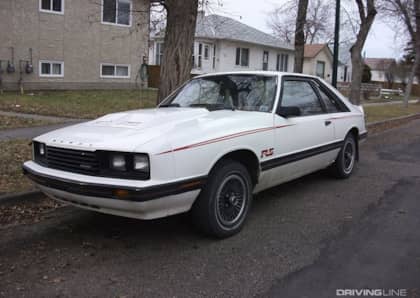5 Ford Thunderbird Concepts And Special Editions You Didn't Know Existed
The Ford Thunderbird spent many years at the top of the automaker's line up as its flagship. Whether it was the original roadster, the short-lived '60s sedan, or the full-size personal luxury coupe and convertible it eventually became, the Thunderbird was long a symbol of the best that FoMoCo had to offer.

Although its pricing often kept it from leading the sales charts, Ford still went out of its way to keep customers interested with a range of unique T-Bird models that explored the limits of performance or helped bolster the brand's design future on the auto show circuit. Some of these one-off autos also tested out potential features for the Thunderbird prior to making the decision to put them into production, and were never given the spotlight they deserved.
These are 5 of our favorite Ford Thunderbird concepts and special editions you may not have known existed.
Ford SVE Thunderbird
In the 1990s Ford built a trio of luxury coupes. The Thunderbird was joined by its Mercury Cougar MN-platform twin, while Lincoln offered the Mark VIII, which rode on a modified version of the same chassis called the FN.

The Mark VIII was notable for delivering nearly 300hp from a 32-valve, 4.6L DOHC V8, which was a major step up over the 205hp, 16-valve version found in the Thunderbird and the Cougar. Eager to give the T-Bird the same talons as its Lincoln cousin, by mid-decade Ford's Special Vehicle Engineering team had shoehorned the mightier motor (which was also available in the Mustang Cobra) under its hood.

The Thunderbird SVE also gained a five-speed manual transmission (lost when the supercharged V6 version of the car was retired), as well as a bumper and wheel treatment similar to that found on the Cobra. Tuned to provide over 300 horses, the SVE would have been a formidable addition to the Thunderbird family, but the decision to retire the nameplate in 1997 cut short any potential production plans.
Ford Thunderbird Supercharged Concept
The hiatus was brief for the Thunderbird, which returned as a retro-themed convertible for the 2002 model year. Motivation was provided by a relatively modest 3.9L V8 rated at 252 horses, which didn't exactly light too many fires among buyers seeking a drivetrain that could match the car's extroverted looks.

The following year Ford answered the bell with a peppier 280hp version of the same motor, as well as the Thunderbird Supercharged Concept. The vehicle's self-explanatory name added another 110 ponies to the mix thanks to its blower, which, like the V8 itself, shared much of its design with Jaguar's similar 4.0-liter supercharged setup found under the hood of its coupes and sedans.

Leveraging its ownership of the British brand at the time made sense for Ford from a cost-savings perspective, and it's hard to understand why the Supercharged Concept never made it from the auto show dais to dealer lots.
Ford Thunderbird Italien
The third-generation Thunderbird was substantially sleeker than its predecessor, but it could have been even more aerodynamically styled if a certain styling concept had been taken more seriously.

While the production version of the coupe maintained the slab roof of the previous T-Bird, the Thunderbird Italien (built in 1963 for use on the Ford Custom Car Caravan circuit), featured a dramatically sloping fastback shape that was a closer match to the rounded look at the front of the car. The car's roof was built out of fiberglass, having been cast from the original clay model of the design.

Only one Italien was ever built, and it somehow survived the ensuing decades to eventually be restored in 2007. The fastback look wouldn't make it over to the 1964 model, which continued the beefy buttresses that had come to define the Thunderbird's shape.
Ford Thunderbird FILA
The '70s and '80s were a fertile period for cross-pollination and collabs between Ford's automotive marketing team and a long list of fashion designers. Brands such as Cartier, Eddie Bauer, and Bill Blass would find their names splashed across Blue Oval and Lincoln products as trim levels and special packages intended to snag the attention of label-conscious shoppers.

Surprisingly, this strategy was only once ever applied once to the Thunderbird. In 1984 the company introduced the Thunderbird FILA, which paired the sportswear company with the recently-downsized, NASCAR-friendly "Aero Bird." FILA's tennis-first image was reflected by the T-Bird's all-white paint with red-and-blue pinstriping, and the company also claimed responsibility for the unique leather upholstery found on the vehicle's seats.

The FILA model could be ordered with any of the Thunderbird's drivetrains, and it could be matched with an available accessories bundle that included a towel and a headband. Just over 2,500 Ford Thunderbird FILAs were built.
Ford Thunderbird Glass Roof Concept
The 2002-2005 Ford Thunderbird convertible provided a choice between traditional soft and removable hard tops. Aftermarket builder Valmet Automotive went a step further with its Glass Roof Concept car that gave the T-Bird not just a retractable hard top, but one that featured enormous glass panels.

The Valmet car was built in Finland, and it stuffed the roof and its folding mechanism between the seats and the trunk, preserving the practicality of the Thunderbird's cargo compartment. A tonneau cover keeps everything looking presentable.

Only one Valmet Glass Roof Concept was ever built, and it was initially shown off at the Geneva auto show in 2003. It's uncertain as to whether Valmet had planned the car as a marketing attempt to catch Ford's attention about potential future collaboration (the company had contracts building convertibles for Porsche, Saab, and others), but given that the model was canceled only two years later it's not surprising that nothing ever came to fruition.
More From Driving Line
- The final Thunderbird coupe is a great stealth performance car with Rad-era cred. Check out our profile on one of Ford's last personal luxury rides.











